Goodwill hunting: how to crowdfund successfully
Crowdfunding can change people’s lives. But there’s a trick to capturing the hearts – and dollars – of strangers.
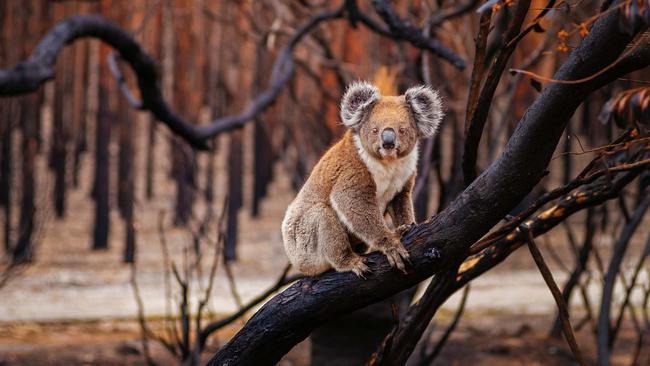
The most rewarding week of real estate agent Dave Skow’s life began on a whim. For two months he had been gorging on reality television, obsessed with the latest news of castaway contestants on this season’s Australian Survivor. “No one would talk to me about it,” he says of the silence from his colleagues in Wagga Wagga whenever he raised the subject of his favourite show. “Because I work in a real estate office everyone is mad about The Block.”
Skow, however, was consumed with the strengths and strategies of Australian Survivor’s 24 contestants, one of whom had seriously seized his attention. Luke Toki, an affable drill operator and father of two young boys with medical conditions, had already charmed and moved viewers on a previous Australian Survivor series in 2017. By the time he was recast for this year’s season, his personal circumstances had become even more precarious. At 33, Toki and his wife Mary had just become parents for a third time. In addition to eight-year-old Lennox’s autism and six-year-old Nate’s global developmental delay, their newborn daughter Madeline was diagnosed with cystic fibrosis – just as Toki travelled from home in Perth to Fiji for filming.
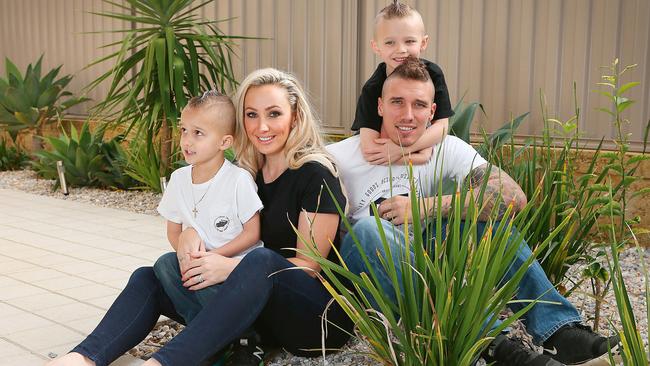
It was a dramatic back-story, and Dave Skow was not the first to be affected by it. In 2017, a viewer had set up a crowdfunding campaign for Toki, using social media to encourage strangers to donate money, via a dedicated web page, to someone they mostly knew as a contestant on a reality TV show. That effort raised around $1500, and while Toki was grateful he was uncomfortable accepting the funds. “I’ve come from nothing; everything that I’ve got I have got it because I’ve worked,” he says now. “I’m not taking off people; I didn’t think it was right. So I gave it all away.”
Two years on, money was much more on his mind, even though chasing it meant leaving his family for weeks to film the show and being away while his baby daughter endured emergency surgery. As this season’s pool of contestants was reduced, Toki found himself increasingly contemplating the $500,000 prize. “When you get very close to the end it’s hard not to think, ‘This is what I am going to do with it: pay off my mortgage, it’s going to give me a little bit of freedom, help my family’.” And then, when he was one of the last four remaining, he was eliminated. “Imagine you nearly win the gold,” he says, as what seemed his only chance at accessing such an enormous sum disappeared, “but you don’t even get a silver or bronze.”
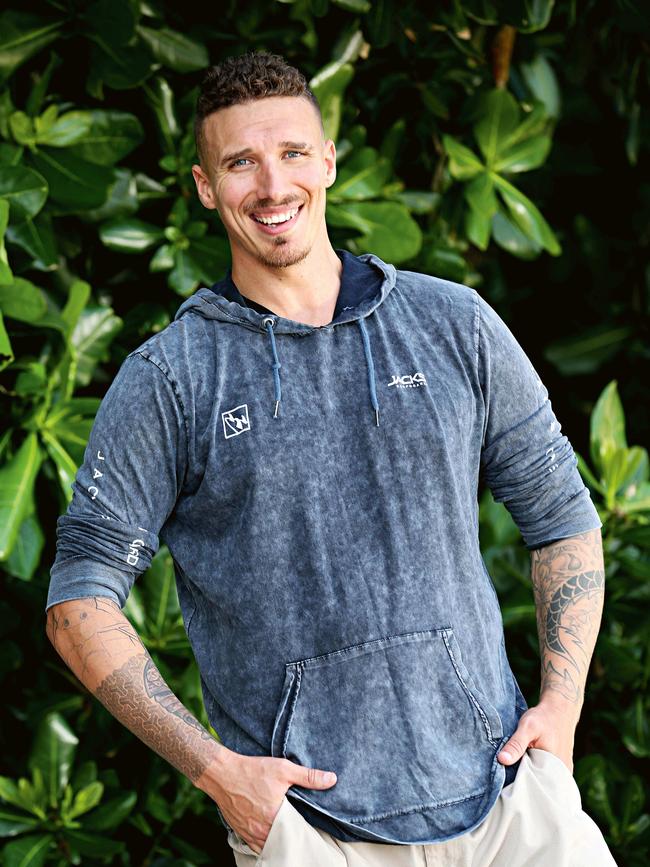
Watching the show at home, 36-year-old Skow was devastated. “I was very invested. I was really upset by the fact that he wasn’t going to be able to win and what he would have been able to do with the money.” So the real estate agent went to his computer and set in motion an act of kindness that would reshape one family’s fortunes on the other side of the continent.
Soon after that night’s episode ended on September 16, and armed with an Australian address, bank account and phone number, a driver’s licence and a tax file number, Skow was able to set up a crowdfunding campaign. “Let’s rally behind this Aussie legend and change this awesome young family’s life,” he wrote on GoFundMe’s website and invited strangers to contribute. He set the target at a lofty $500,000 – the amount Toki would have collected had he won the show – although he privately envisaged $20,000 and figured even that would take weeks to raise.
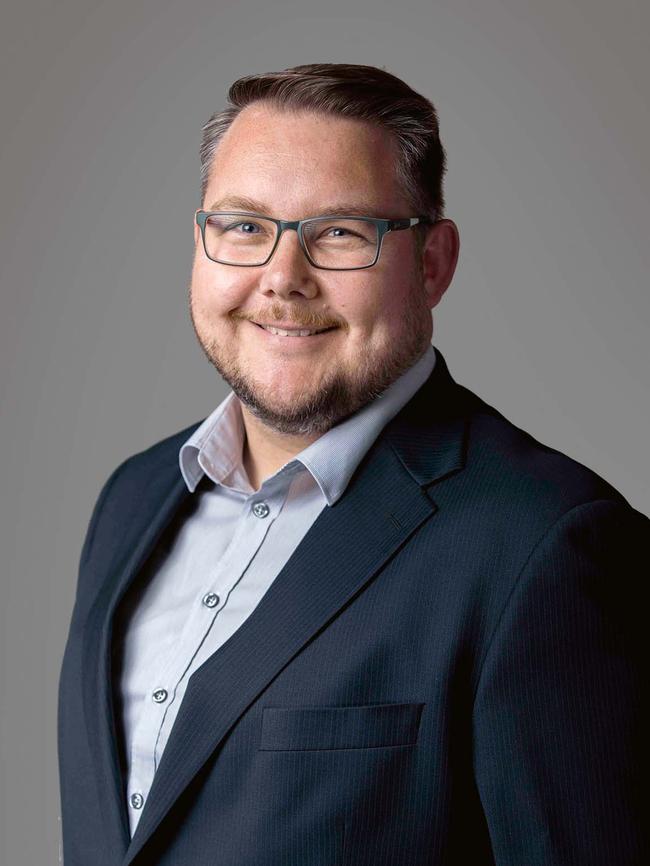
But like the elusive elements of charisma, some stories can stir unexpected responses, and before Skow went to bed that night $70,000 had been donated. When he awoke the next morning, the tally was $100,000. Within 24 hours, a record $330,000 had been raised, making it the fastest campaign in Australia. In almost 60 hours, Skow’s seemingly unattainable target had been achieved.
By the time it hit $550,000 from 16,000 donations after just three days, word had reached Toki via social media. Back home in Perth, he asked Skow to stop the campaign. “I just thought it was the right thing to do,” says Toki of his request for potential donors to please send no more money. Unlike two years earlier, this time he chose to keep the bulk of the bequests – $500,000 for his family, and the remainder to be placed into a charitable account. “That could actually set my family up and I want to be able to do that. Why not? Sometimes I feel in life people just need a break.”
Like charity has for so long, this goodwill act began at home. “I did nothing really. It took five minutes from my lounge room because I thought it was a nice thing to do,” says Skow, a crowdfunding novice who, with minimal effort and time, enacted the first in a chain of charitable gestures to help someone he’d only ever seen on a screen.
In 2019, giving has a new and distinctly 21st-century face. Increasing numbers of people are turning to crowdfunding to help those in need. “It’s like a new era of giving. It’s driven by empathy and by urgency,” says Nicola Britton, regional manager Australia for GoFundMe. The platform has been operating here since 2016 and capturing donor dollars for myriad causes – from families relocating for medical issues to others in financial strife after the death of a loved one.
More than two million Australians have donated more than $200 million through GoFundMe since 2016. Over the past year, since becoming a fee-free platform, it has seen a 61 per cent increase in the volume of Australian donations. A similar phenomenon is occurring globally: since its fundraising feature was set up overseas five years ago, Facebook users have donated $US2 billion.
But while plenty are willing to give, exactly who and what will capture hearts and dollars is not always obvious. Crowdfunding websites are filled with thousands of cases, some charitable, some rewards-based and offering perks to donors, and all jockeying for attention. A search for “desperate” on Indiegogo, for example, reveals the case of a Canadian man “In Desperate need of Double Lung Transplant”, who raised $US425 through six backers several years ago and met just 4 per cent of his target. His plea is followed by that of a Californian survivor of emotional and physical abuse, in “Desperate Need of a New Laptop”, who raised $US1336 through 53 backers.
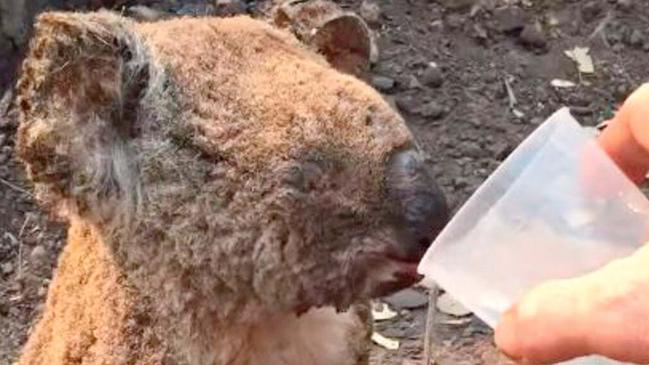
When bushfires erupted in northern NSW in October, the Port Macquarie Koala Hospital created an online campaign to raise $25,000 “to help thirsty koalas devastated” by the blazes. By December 10 over 44,000 people had donated more than $1.96 million – an amount that staggered organisers, who had underestimated the power of imagery of the injured animals. “Seeing the damage and the poor little koalas absolutely broke my heart,” wrote one donor. “We all need to step up when vulnerable animals are at risk,” wrote another.
Sometimes cuteness sells. Earlier this year Molly Windsor, a 12-year-old British girl, raised £406 through 11 backers by selling self-drawn cards of dogs – more than enough to buy herself a designer puppy. And sometimes gimmicks sell, as Zack Brown, a web designer from Ohio, discovered when he launched a campaign on Kickstarter five years ago. “Basically I’m just making potato salad,” went his online pitch. “I haven’t decided what kind yet.” His target was $US10. By the time his 30-day campaign ended in August 2014, he had enough money to feed a virtual village courtesy of the 6911 backers who contributed $US55,492 to his initiative. Brown’s internet stunt – which in turn started a petition to have him jailed, but only attracted five supporters – led to a massive potato salad party and later the publication of a cookbook.
Is a potato salad more worthy than a starving child? Donating always involves judgments, and the immediacy of social media can compound the dilemma. Does the family of a losing reality TV show contestant deserve your money right now over, say, a long-term drought-stricken farmer? “It’s not donating to one in spite of the other. You can’t donate to everyone,” says Skow, who has been approached by others seeking help to crowdfund their needs. “But it wouldn’t work, because they’re not Luke Toki. They don’t have a story like he had. They didn’t have the public following that he had.”
Back-stories can be crucial to attracting donor dollars, as Cedar Anderson, 39, and his father Stuart have discovered. The inveterate inventors had been developing their most recent project – a new kind of beehive – for close to a decade when they opted to take it to the masses. For many apiarists, honey harvesting is a multi-stage and potentially hazardous process that involves cracking open a hive, smoking the bees to subdue them, slicing off a layer of wax, spinning the honeycomb and then straining the honey. But from their shed in northern NSW the Andersons devised a simplified way to obtain honey directly from the hive with the crank of a handle.
In their years creating Flow Hive they had relied on loans from family members, but by early 2015 they had reached a critical point. “We knew it would get copied straight away and that we needed to be putting our flag in the sand, to say this is what we built,” says Stuart, 65. But to start mass producing they needed $US70,000. They looked at multiple forms of funding, including banks and angel investors; they spoke to other inventors and were encouraged to team up with a company in New Zealand. But ultimately, as Cedar had first urged, they opted to crowdfund. “I just thought it was super smart to be able to get the money first and then make the product,” he explains. Or, as his father says of the appeal of crowdfunding: “It’s an announcement to the world that this is our work.”
In early 2015, after a concerted Facebook campaign to build a customer base and with the help of a video teaser created by Cedar’s sister Mirabai, they launched their campaign on Indiegogo, a launchpad for entrepreneurial ideas. Depending on the contribution, donors were offered anything from thankyou cards to a complete hive kit. Even at this point, though, the pair weren’t convinced that they would achieve their goal. They had shown their work to beekeepers and the response had been mixed. Says Cedar: “You second guess yourself; perhaps we’re another deluded inventor thinking what we’ve invented is going to be interesting to the world.”
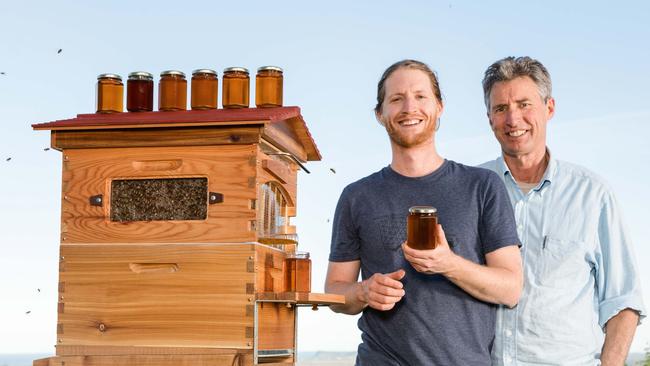
In the end, it took just seven minutes to reach their target. Within hours they had raised $US2 million. By the time their campaign ended less than two months later – it was extended slightly when Cedar took leave for the birth of his first child – they’d raised nearly $20 million courtesy of 40,000-odd backers, making it one of the most successful crowdfunding campaigns anywhere.
There have been some costs along the way. Cedar, a one-time paragliding instructor who had never previously earned more than $20,000 a year, experienced anxiety for the first time in his life when the campaign ended and tens of thousands of donor orders had to be filled within months. There was also resistance from some apiarists. “There had been a degree of grumpiness, if not backlash, from some segments of the beekeeping community,” says Stuart. “It was the way we burst on the scene and from their point of view we made beekeeping look easy… I’ve lost count of how many beekeepers stomp up to me overseas and say, ‘It won’t work in our climate you know’.”
In the crowded world of crowdfunding, Flow Hive’s success – they have sold more than 100,000 hives in 130 countries – is a comparative anomaly. “Most of the time I can’t process it,” says Stuart, who is just back from a three-month overseas speaking tour. “I went to an international beekeeper’s conference just a few months after [the crowdfunding launch] and people recognised me… people kept stopping me for a photo and signature.” He attributes their success to a combination of timing, concern about the plight of bees, lots of preparation, a new invention, and a father-and-son back-story.
Comparatively few stories have such a momentous ending, even those that have raised enormous sums. Flow Hive ranks as the world’s fifth most successful crowdfunding campaign. Of the four ahead of it, two were for the now defunct smartwatch maker Pebble, and a third was for the Coolest Cooler, an über-Esky plagued with delivery problems and whose developer was later barred from rewards-based crowdfunding until a range of issues was resolved. Today, only Kingdom Death, a “massive cooperative board game about survival in a nightmare-horror world” remains ahead of Flow Hive as the world’s most funded campaign still standing strong.
For the Andersons, crowdfunding has been life-changing. After years spent experimenting in a shed, they now have 40-odd employees with whom they work from a magnificent Queenlander near Byron Bay, with a swimming pool in the lower garden and vast views across lush fields and out to sea. It has also been an early affirmation, from all the strangers who invested with them, that their invention is worthwhile.
Crowdfunding for inventions is one thing, but not everyone is convinced it is thebest way to help those in need of charity. “Crowdfunding is often undertaken with very good intentions but that is in no way regulated,” says Katherine Raskob, CEO of Fundraising Institute Australia. While registered charities – some of which use crowdfunding platforms – have tax deductibility status and are subject to governance standards and a voluntary code of practice, not all causes that are crowdfunded are working towards a charitable purpose, says Raskob. “It’s sort of buyer beware.”
As much as the internet can be useful in spreading the word for those in need, it can also be open to misuse. In September two fundraising pages were set up on GoGetFunding by a user pretending to be a relative of 11-year-old Abbey Forrest, who’d been killed in a car crash in the Kimberley. The campaigns were later taken down and donations refunded. And in October, less than 48 hours after 64-year-old John Gotts died in a light plane crash near Darwin, scammers posing as his relatives set up at least three Facebook accounts seeking donations for funeral costs. Those accounts were also deleted. There have been multiple cases worldwide of people faking cancer to fraudulently raise money, including two cases in Queensland that are before the courts.
“I’ve had a lot of people asking me, ‘How do we know this is genuine?’ ” Dave Skow says of the several dozen messages he received soon after launching his fund to help Luke Toki. “And I wrote back to them, ‘I guarantee it is.’” Indeed, initially he felt he had little more than his word to assure potential donors that their money would be given to its intended recipient. To set up the account, Skow had not had to provide bank account details. Only later, after Toki’s wife Mary contacted him via social media and he nominated her as beneficiary, was he able to include the couple’s bank account details. “By the end of that first night, when we were at $60,000 or $70,000, I absolutely could have plugged my bank account details in, pressed ‘withdraw’ and said ‘thank you very much’,” says Skow. “I don’t see how that could have been stopped.”
GoFundMe’s Nicola Britton says all funds remain under the organisation’s control “until we are happy that they will reach the right place”, and that less than one-tenth of one per cent of all campaigns on the platform globally are fraudulent. “There will always be bad actors – that’s why we invest heavily in our Trust and Safety operations to combat misuse on our platform… over a third of our business is dedicated to vetting, monitoring pages and interacting with campaign organisers to verify the credibility of their fundraiser.”
As one of the few platforms with Australian- based staff, GoFundMe has set some of its own rules, among them a guaranteed refund if donations do not end up where they are intended. Its rules were subject to enormous scrutiny earlier this year when it closed Israel Folau’s campaign to raise funds for his legal fight with Rugby Australia, which had sacked him for an anti-gay social media post. Britton announced that the hundreds of thousands of dollars raised would be refunded because Folau’s campaign violated the terms of service of the company, which was committed to fostering an environment of inclusivity.
Like charity everywhere, crowdfunding is as much about giving as receiving. For Luke Toki, its impact has been momentous. Although he has returned to work full-time, he now has the financial means to help his family to a degree he never imagined. “It sets up my kids’ future,” he says.
On the other side of this equation, an act that began as a whim has also brought unexpected benefits for Dave Skow. “I swiped an image of Luke and his family, uploaded it, kicked in a couple of hundred dollars,” he says of his initial gesture. “There was no return.” But he has been overwhelmed and humbled at how widely his plea was heard across the internet. “It’s been mind-blowing, the most surreal weeks of my life,” he says. “And it’s made me feel very good.”


To join the conversation, please log in. Don't have an account? Register
Join the conversation, you are commenting as Logout